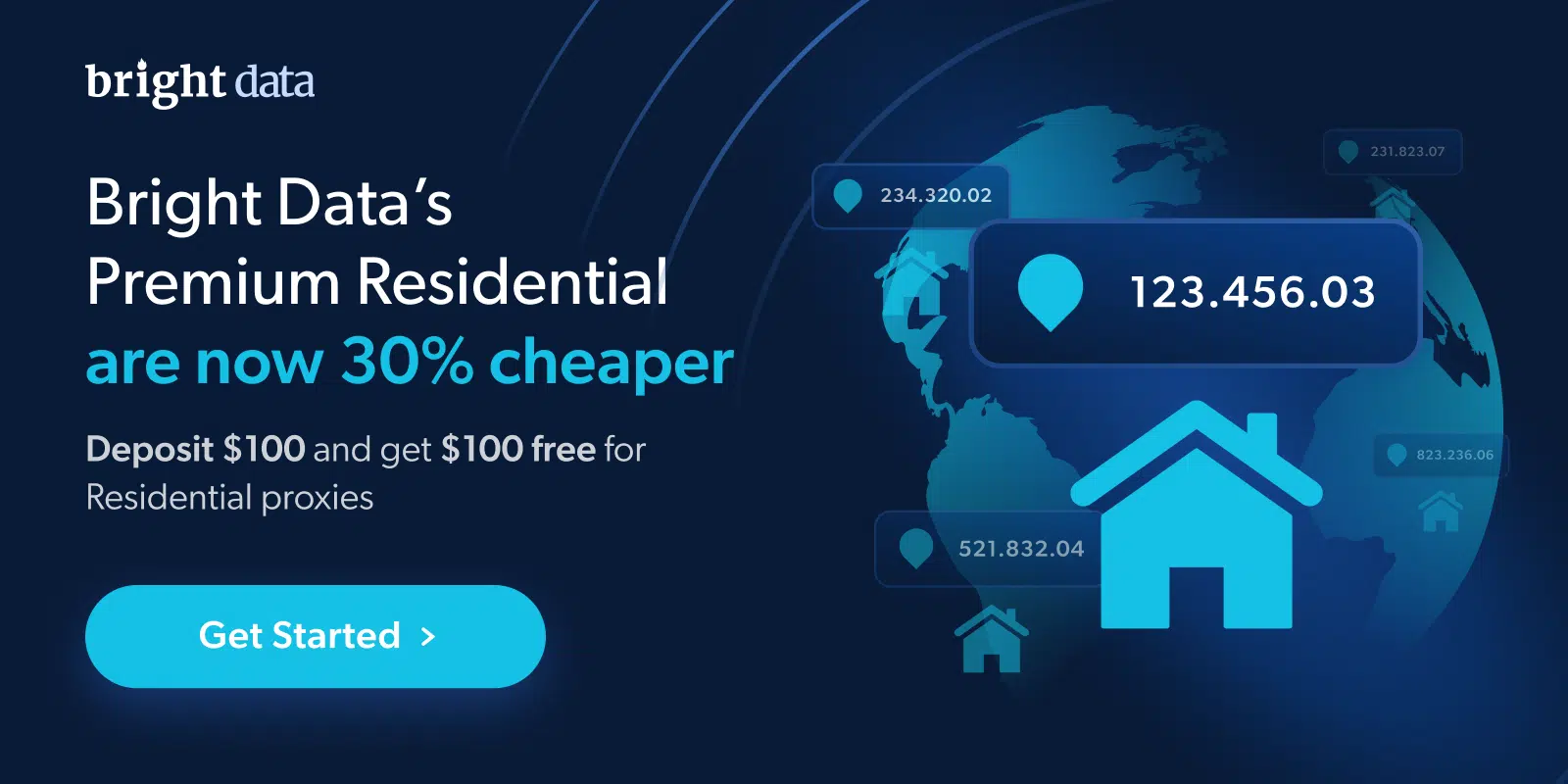The internet contains a treasure trove of valuable data – you just need the right tools to extract it. As a web scraping expert with over 5 years of experience, I‘ve seen firsthand how organizations across industries unlock immense value by leveraging web scraping.
In this comprehensive guide, I’ll share my insider knowledge to help you successfully implement scraping for business gains. You’ll learn:
- What web scraping is and its key benefits
- Top web scraping use cases fueling growth
- Battle-tested best practices for sustainable scraping
- Overcoming advanced anti-scraping measures
- Choosing the best web scraping tools and proxies
- Following robust web scraping frameworks
- Extracting data from the best website targets
- Plus actionable web scraping tactics to boost your business
Let’s dive into how you can harness web scraping’s immense power!
What Is Web Scraping? A Quick Primer
Web scraping refers to the automated collection of publicly available data from websites. Scraping bots programmatically send HTTP requests to sites, then extract information from the HTML, JSON or other structured responses.
Web scraping provides transformative business benefits:
- Scale – Extract thousands to millions of data points quickly and efficiently.
- Automation – Crawl sites and scrape data 24/7 without manual efforts.
- Cost – Far more affordable than licensing data from brokers.
- Timeliness – Surface real-time data as soon as it appears on sites.
- Customization – Tailor scraping to your specific use case or niche.
According to ScraperApi‘s 2021 Web Scraping Survey, 76% of businesses leverage web scraping today. The practice delivers game-changing advantages, yet isn‘t without nuance. Proper techniques and precautions are vital for success.
Now let’s explore the highest value applications fueling web scraping’s soaring adoption.
Top 5 Web Scraping Use Cases Driving Tangible Business Growth
The potential applications of web scraping are endless. But through my experience, these 5 use cases consistently deliver immense value by informing critical business decisions:
1. Competitive Intelligence
Web scraping enables continuous tracking of competitors’ pricing, product catalog, marketing messaging, technical capabilities and more.
For example, a retailer can scrape competitors' product pages to monitor pricing changes in real-time. If a rival lowers prices, they can quickly adjust their own pricing to stay competitive.
2. Lead Generation
Scraping niche directories, forums, and other industry sources provides a pipeline of quality leads matching your ideal customer profile.
Define the attributes – like job titles, technologies used, company sizes – then extract contact information for all matching prospects. Enrich these leads with social media scrapes to enable targeted, personalized outreach.
3. Market Research
Web scraping uncovers powerful market insights around trends, buyer sentiment, product reception, and micro-vertical demand drivers.
Reviews provide voice-of-customer feedback for product improvements and segmentation. Brand monitoring across social media reveals perceptions and PR opportunities. Discussion forum scraping surfaces rising trends and pain points.
4. Job Aggregation
Automated scraping of niche job boards, applicant tracking systems and career sites enables sourcing promising openings with relevant skillsets as soon as they‘re listed.
Recurring scrapes eliminate manually checking individual sites daily. You also gain data like required skills, salary ranges and location prevalence to refine recruiting.
5. Real Estate Market Analysis
For real estate investors, scraping property listing data including pricing history, locations, home details and acreage provides comprehensive market insights to capitalize on undervalued deals.
Historical data analysis reveals up-and-coming locations and neighborhoods. Current scrapes combined with valuation models surface underpriced or pre-foreclosure listings.
These five use cases represent web scraping’s immense power to inform major growth decisions through data advantage. Now let’s discuss techniques to ensure your scraping efforts are legal, sustainable and effective.
Battle-Tested Best Practices for Legally Scraping Sites
Web scraping offers game-changing advantages, but only if executed properly using prudent guidelines:
- Obey robots.txt – Avoid scraping pages blocked in a domain’s robots.txt file. This defines off-limit scraping areas.
- Use proxies – Rotate different residential IP addresses to prevent blocks from concentrated traffic.
- Limit volume – Keep request frequency and depth moderate to respect sites’ bandwidth and infrastructure.
- Employ modulation – Vary inputs like user agents and referer headers across sessions to appear more human.
- Handle dynamism – Adapt scrapers to handle modern JavaScript rendering and interactions.
- Monitor terms of use – Never scrape private, protected or prohibited data as defined on sites' terms pages.
- Clean data – Deduplicate records, normalize formats, and enrich extracted data for analysis readiness.
- Secure data – Encrypt scraped data in transit and at rest. Restrict internal data access.
Based on my experience, brands that follow these guidelines sustain scraping success without blocks or legal issues. Now let’s dive into overcoming some of the most advanced anti-scraping measures employed today.
Top Anti-Scraping Tactics and How to Defeat Them
As web scraping’s popularity soared, sites devoted more resources to preventing large-scale extraction. Common anti-scraping approaches include:
IP Blocking
Sites ban abusing IP addresses after excessive requests. Rotating residential proxies thwarts this.
CAPTCHAs
Manual verification challenges prevent unrestrained automation. Leverage CAPTCHA-solving services to bypass.
Obfuscation
Important page elements are hidden or obscured to complicate scraping. Adapt scrapers to handle these attempts.
Mouse Movement Tracking
Sites analyze mouse coordinates to detect bots. Properly configured browsers foil this tactic.
Honeypots
Fake fields trap scrapers trying to extract meaningless data. Defensively code scrapers to avoid honeypots.
JavaScript Rendering
Content surfaces via complex browser-executed JavaScript. Scraping tools like Puppeteer provide JavaScript execution to beat this technique.
With the right proxy service, browser automation tooling and resilient coding, scrapers can defeat even the most advanced blocking attempts. But for many, configuring an enterprise-grade scraping operation requires further assistance.
Choosing the Right Web Scraping Tools & Proxies
Given web scraping’s immense complexity, most businesses opt for purpose-built tools over custom coding:
Scraping APIs
Services like ScrapeStack and ProxyCrawl offer point-and-click data extraction requiring zero programming.
Browser Automation
Headless Chrome automation kits like Puppeteer and Playwright speed dynamic JavaScript scraping.
Visual Workflow Builders
User-friendly platforms like ParseHub and Octoparse enable easy scraper configuration without code.
Residential Proxies
Proxy providers like Smartproxy and Luminati offer IP address rotation to prevent blocks.
Managed Scraping
End-to-end scraping solutions like ScrapingBee and ScrapeHero handle proxy infrastructure, CAPTCHAs, and more.
Based on client needs, I typically recommend combining data-focused scraping APIs with robust proxy services to simplify scraping execution and deliver high-quality data.
Now let’s unpack the coding frameworks I lean on most when custom scraping is required.
Top 5 Open-Source Web Scraping Frameworks for Developers
For engineers looking to build custom scrapers tailored to unique data needs, these coding frameworks accelerate development:
Scrapy
The most popular open-source scraping framework for Python, Scrapy enables creating complex crawlers via an expressive API. Its spider architecture and multiprocessing make it very performant.
BeautifulSoup
Beautiful Soup offers straightforward HTML/XML parsing with Python. It makes extracting information from documents easy. Great for basic scraping tasks before outputting data to pandas or numpy.
Selenium
Selenium provides automated control of browsers like Chrome, Firefox and Edge via scripts. It’s essential for scraping complex JavaScript-rendered sites.
Puppeteer
A Node.js library built on Headless Chrome, Puppeteer supports browser automation for scraping. Features like screen capturing also prove helpful.
Cheerio
For Node.js development, Cheerio simplifies querying HTML with a jQuery-like syntax. It’s lightweight yet powerful – great for replacing BeautifulSoup in JavaScript scraping projects.
These battle-tested open-source libraries provide the core components for industrial-grade custom scraping operations.
Now let’s pivot to uncovering the highest-value websites to focus your scraping efforts.
Top Web Scraping Targets: 21 Essential Sites to Extract Data From
The internet offers endless data, but not all sources provide equal value. Through careful analysis over years of scraping projects, I’ve identified 21 high-ROI websites for extraction:
Search Engines
- Google – SEO insights via rankings, searches, and related keywords.
- Bing – Unique searcher geography and intent data.
- YouTube – Metadata including descriptions, tags and view counts.
Ecommerce
- Amazon – Product listings, reviews, ratings and pricing.
- eBay – Auction monitoring, seller research and pricing data.
- Etsy – Marketplace tracking, shopper demographics and reviews.
Retail
- Walmart – Inventory feeds, product details and pricing.
- Target – Catalog data, promotions, store availability and pricing.
- Best Buy – Ratings, reviews, discounts and inventory.
Autos
- Edmunds – Car research content, reviews, dealer listings and inventory.
- Autotrader – Listings, prices and vehicle history data.
- CarGurus – Dealership reviews, price analysis and listings.
Real Estate
- Zillow – Property valuations, price changes and mortgage rates.
- Realtor – MLS listings, agent details and market trends.
- Apartments.com – Rental property listings, prices and unit details.
Recruiting
- LinkedIn – Professional search, profiles, skills and company pages.
- Monster – Job listings, applicant data and company hiring trends.
- Glassdoor – Salaries, reviews and interview insights.
Social Networks
- Facebook – Brand monitoring, ads, posts and business pages.
- Instagram – Influencer partnerships, brand awareness and engagement.
- Twitter – Trend analysis, brand monitoring and breaking news.
These sites consistently offer expansive, publicly available data aligned to major web scraping use cases like competitive intelligence, recruitment and market research.
Now let’s move forward with key recommendations to ensure your web scraping initiatives deliver maximum value.
Expert Tips to Sustainably Scale Your Web Scraping Results
After years of helping organizations implement web scraping, I’ve compiled top recommendations to drive success:
- Start small to prove value – Begin with a well-defined use case and small target site to demonstrate scrapers' capabilities and benefits before scaling up.
- Monitor KPIs – Establish measurable KPIs like leads generated or keywords tracked to quantify web scraping ROI over time.
- Leverage APIs first – Purpose-built web scraping APIs like ScrapingBee require no complex configuration yet deliver data fast.
- Combine tools – Blend scraping APIs for simplicity with proxies for scale and browser automation for JavaScript sites.
- Clean and enrich data – Deduplicate records, normalize formats, and append external data for analysis readiness.
- Follow best practices – Carefully obey robots.txt, monitor site terms of use, secure data properly and modulate scraping.
- Be prepared to maintain – Update scrapers regularly as sites evolve to prevent broken processes. Monitoring and maintenance are key.
- Focus on value, not volume – Target narrow, high-ROI data to avoid becoming overwhelmed by the scale of the internet. Prioritize quality over quantity.
Adhering to these tips will ensure your scraping efforts deliver significant business impact with the least friction.
Power Your Business Through Targeted Data Extraction
As this comprehensive web scraping guide demonstrates, strategically extracting data from the internet’s endless sea of public information can provide unmatched competitive advantage. With the right tools, techniques, and precautions, any business can harness web scraping’s immense strategic power.
To discuss enabling web scraping for your organization or to learn more, feel free to reach out directly to me at [email] or [phone]. I look forward to helping you capitalize on web scraping’s immense untapped potential. The data that unlocks growth is waiting – let’s start extracting it today!

